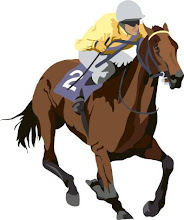Probably the most misunderstood aspect of a horse’s diet protein is made up of long chain branch amino acids the building blocks of bones, muscles, and virtually all of the body's soft tissues, for growth and repair.
Essential Part of a Horse’s Diet
This makes protein an essential part of the diet as the horse continually uses protein either to build new tissues, as in growth, or to repair worn out tissues. Protein is the main constituent of the organs (such as liver, heart, kidneys, etc) and tissues (such as muscle, tendons, ligaments, cartilage) and most of the bone matrix which comprises 20% of bone is composed of protein. Protein is required to develop muscling, and most body functions require protein in many different forms.
The Power of Protein in Recovery in Race Horses
An Endocrinology and Metabolism study conducted at Copenhagen Muscle Research Centre, Copenhagen N, Denmark
Branched-chain amino acids (BCAA) or a placebo was given to seven subjects during 1 h of ergometer cycle exercise and a 2-h recovery period. Intake of BCAA did not influence the rate of exchange of the aromatic amino acids, tyrosine and phenylalanine, in the legs during exercise or the increase in their concentration in muscle.
The increase was ~30% in both conditions. On the other hand, in the recovery period after exercise, a faster decrease in the muscle concentration of aromatic amino acids was found in the BCAA experiment (46% compared with 25% in the placebo condition).
There was also a tendency to a smaller release (an average of 32%) of these amino acids from the legs during the 2-h recovery. The results suggest that BCAA have a protein-sparing effect during the recovery after exercise, either that protein synthesis has been stimulated and/or protein degradation has decreased, but the data during exercise are too variable to make any conclusions about the effects during exercise. The effect in the recovery period does not seem to be mediated by insulin (Blomstrand, Saltin).
Faster Recovery = Faster, Stronger Horse
Steroids do not directly build muscle what they do however is decrease recovery time and thereby increase the ability to train and eat. The end result being increased muscle mass, increased strength and conversely increased speed.
Not all Protein is Good / Useful Protein
Normally a feed's protein level is determined by looking at the percentage value on the feed tag under "crude protein." But the crude protein numbers do not really reflect either a protein's overall quality (which can be determined only by the amino acid profile), or the amount of protein from that feed a horse can digest and use.
Nitrogen Content
The crude protein value is based on the overall nitrogen content of a feed, and not all of the nitrogen in a feed sample is necessarily protein-bound. Nitrogen also might be found in purines, creatinine, ammonium salts, and nucleic acids, all of which might be in a feed sample. As such you are unsure as to the usefulness of the information when determining the proper amount of protein to supplement your race horse.
Need Supplementation or Essential Amino Acids
The dietary requirements of race horses are not only a matter of providing a sufficient quantity of protein, the quality of protein is very important. Proteins are made of approximately 20 amino acids in varying combinations.
Horses can only make about half of these amino acids and must therefore be supplied with the ones they cannot make. These are called "essential" amino acids.
Quality Supplementation is the Key
Protein quality is determined by the proportions of essential amino acids making up the protein. Thereby all supplements administered to the horse should be produced in an FDA approved lab and graded as for human consumption. Otherwise the product may have little or no standards of quality and may actually cause more harm than good.











No comments:
Post a Comment